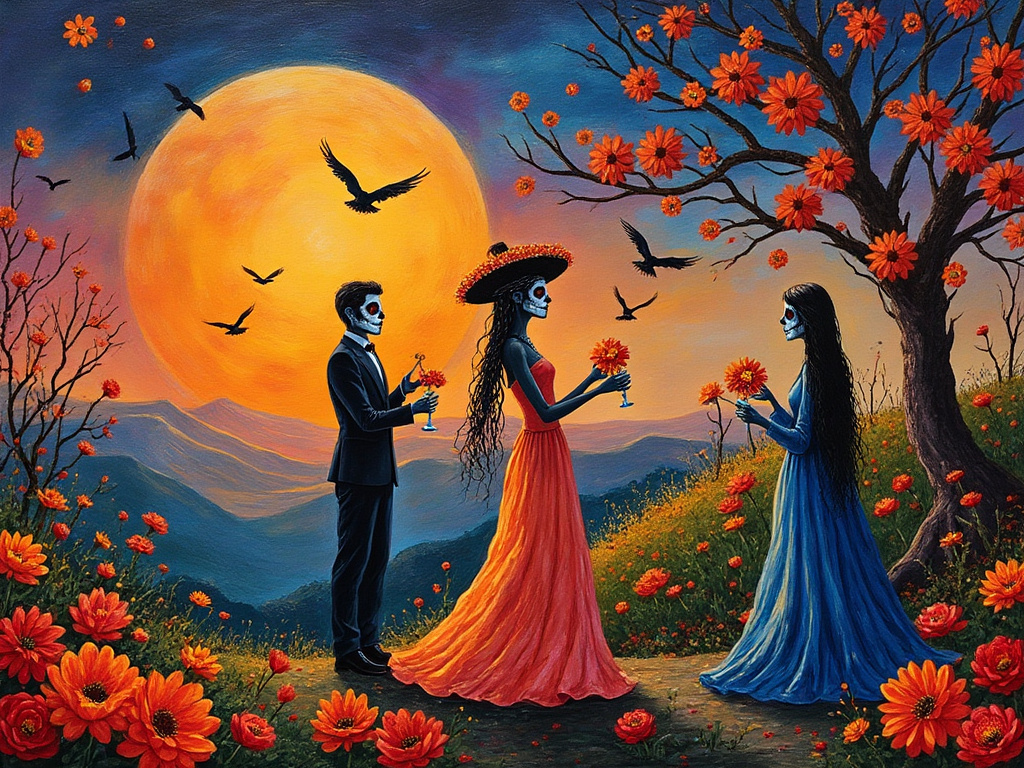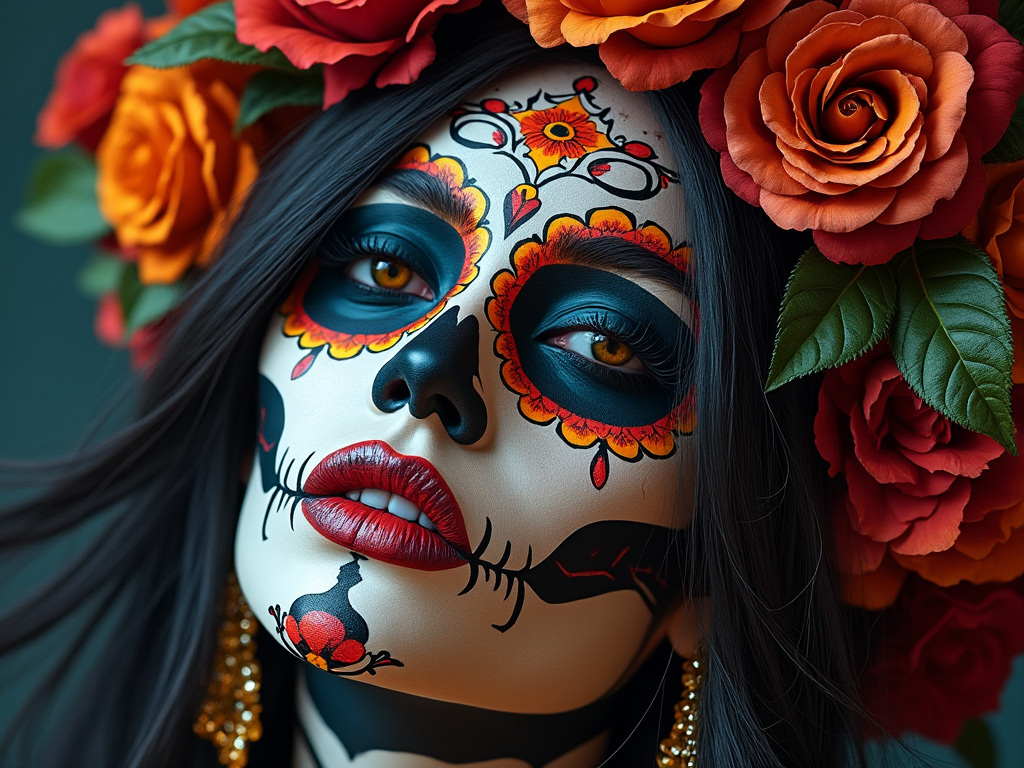Introduction
What if death wasn’t the end but the beginning of something beautiful—a chance to reconnect, laugh, and celebrate with those who came before us? That’s exactly what Día de los Muertos (Day of the Dead) offers: an electric mix of ancient tradition, heartfelt remembrance, and pure joy. Forget solemn goodbyes—this is a party where life and death dance side by side!
Ancient Beginnings: Where It All Started
Imagine standing in the bustling heart of the Aztec Empire over 3,000 years ago. The people believed that death wasn’t a curtain call but a transformative journey—the soul passing through different realms before resting peacefully. These ancient cultures, like the Maya, Toltec, and Aztecs, celebrated death as an extension of life, honoring the spirits of ancestors with offerings of food, flowers, and rituals. Festivals honoring Mictecacihuatl, the Queen of the Underworld, were held to keep the bond between the living and the dead alive. Sound familiar? That’s because these traditions are the foundation of Día de los Muertos!
A Collision of Cultures: Ancient Meets Catholic
When Spanish conquistadors arrived in the 16th century, they brought with them Catholic holidays like All Saints’ Day and All Souls’ Day. The indigenous traditions, with their grand celebrations of death, didn’t disappear—they evolved. Over time, the native rituals blended with Catholic customs, creating what we now know as Día de los Muertos—a holiday where the past and present intertwine in spectacular fashion.

The Ofrenda: A Love Letter to the Past
At the heart of the celebration is the ofrenda—a glowing, flower-strewn altar where families lay out offerings for the spirits of loved ones. But these altars are no ordinary displays. They’re a burst of color and emotion, stacked high with:
- Photos of the departed, symbolizing their presence.
- Pan de Muerto (Bread of the Dead)—a sugary, citrusy bread meant to nourish visiting spirits.
- Cempasúchil (Marigolds)—their bright petals and fragrance act like beacons, leading souls back to the world of the living.
- Calaveras (Sugar Skulls)—playfully decorated skulls reminding everyone to laugh at death, not fear it.
Every object on the altar tells a story of love and memory, making each ofrenda unique to the family it represents.
Two Days, Endless Celebration
The excitement kicks off on November 1st, known as Día de los Angelitos (Day of the Little Angels), when the spirits of children return to visit. Families leave toys, sweets, and smaller altars to welcome these young souls. On November 2nd, the party continues with Día de los Difuntos (Day of the Dead), focusing on the adults. With music, laughter, and feasting, families gather at home and in cemeteries, transforming graveyards into lively reunions.
The message? The dead aren’t gone—they’ve just changed addresses!

La Catrina: Death, Dressed to Impress
No Día de los Muertos celebration is complete without La Catrina, the elegantly dressed skeleton wearing a grand hat. Created by artist José Guadalupe Posada, La Catrina is now the icon of the holiday, reminding everyone that death doesn’t discriminate—whether rich or poor, we all share the same fate. But rather than dreading it, Día de los Muertos encourages us to embrace it with style and humor.
Why This Celebration Matters
What makes Día de los Muertos so powerful? It teaches us to celebrate life in all its messy, joyful, and fleeting beauty. It says: Don’t be afraid of death—honor it, laugh with it, and keep those you love alive in your heart. In a world that often avoids the topic of death, Día de los Muertos invites us to live fully and cherish every moment.
So when the marigold petals hit the ground and the candles flicker into life, remember: this is no ordinary celebration. It’s a fiesta of the soul, a reminder that even after we’re gone, our stories will live on—told, retold, and celebrated by those we leave behind.
The party is waiting—will you join the dance?
Discover more from Articles Of AI
Subscribe to get the latest posts sent to your email.

